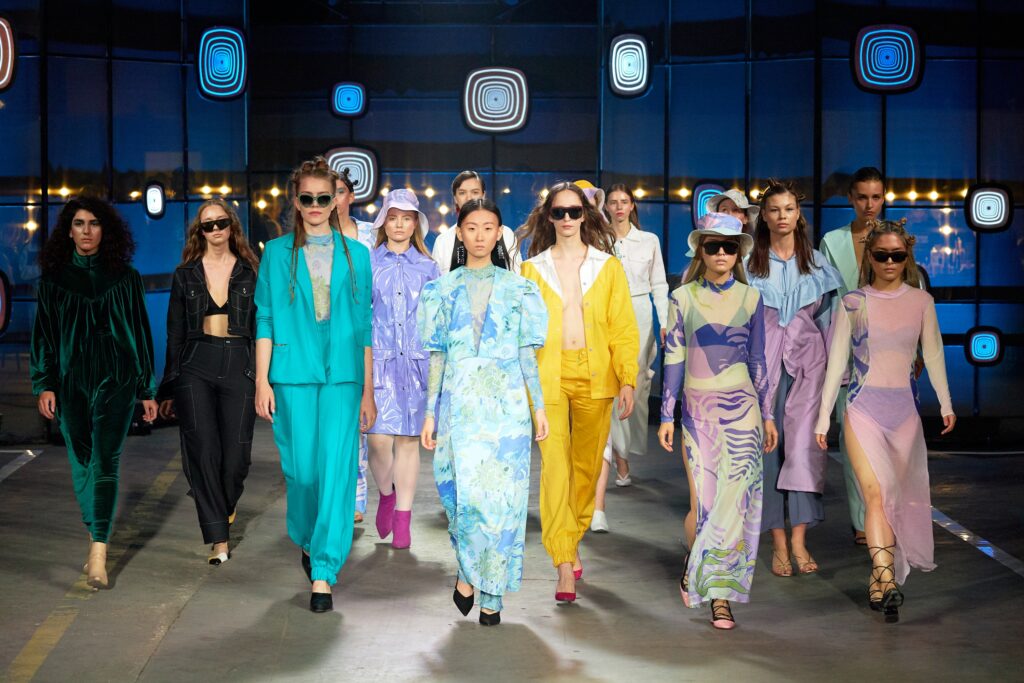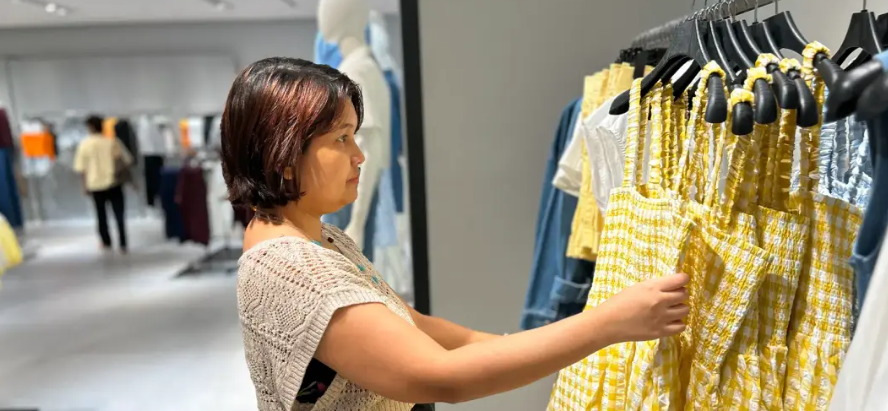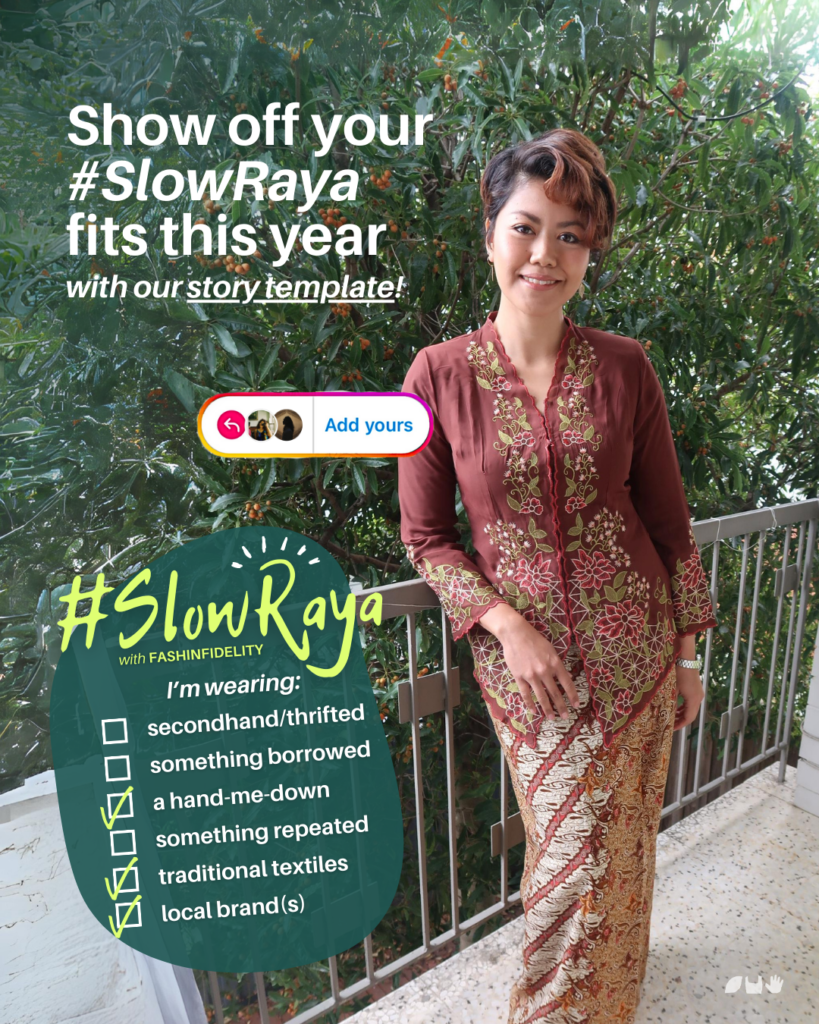A guide for all you aspiring fashion designers with a passion for sustainability. With insights from sustainable fashion advocates – Sabi Sohrabi, senior lecturer at Raffles Design Institute, Kate Sala, fashion lecturer at RMIT University and Tess Whitfort, Melbourne-based sustainable fashion designer. We discuss what the role means, local sustainable fashion courses, the skills to success and what ‘success’ even looks like.
By Shareena Aziz
2989 words; 14 min read.
If you’re thinking about sustainability within fashion, then you’re already one step ahead. Before the boom of fast fashion merely 30 years ago, sustainable fashion wasn’t even part of the common conversation within the industry. Even less so were there sustainable fashion designers.
But when Gen Zs and millennials started representing a huge portion of the fashion consumer group, they introduced their own values around social and environmental issues along with their spending habits. With nine in ten consumers saying they’d like these issues addressed, more brands are prioritising transparency across production and manufacturing processes. Now, Sustainable Fashion finds itself a formidable part of the global fashion industry with its impact only expected to rise.
Sustainable fashion designers hold a unique influence on the way fashion can be supplied and demanded. So, if you’re up for the task, keep reading.
“…being upset by the damage but then also being excited by the solutions” – Tess Whitford, Redress 2018 Sustainable Fashion Award winner
What exactly is a Sustainable Fashion Designer?
If Sustainable Fashion represents a movement and process of fostering change to fashion products and the fashion system towards greater ecological integrity and social justice, then where does a Sustainable Fashion Designer fit into this realm?
Sustainable fashion designers know that the fashion industry is inherently unsustainable, and it can take years of being in the industry to actually see this unfold before your eyes. Sabi, Tess and Kate say they all shared this same experience.
“I was confronted with the realities of the industry and its consequences,” Sabi says. “I think, more than understanding the importance of sustainability, it was about first coming to the awareness that what we’re doing is unsustainable.”
Once you do, however — cross that bridge into the realities of the fashion industry — what you find on the other side are endless and revolutionary solutions. It’s a kindling mixture of feelings, “being upset by the damage but then also being excited by the solutions”, as Tess felt.
The role of a fashion designer has seen a shift since processes that used to be behind-the-scenes have now transpired through the media and consumers are becoming more aware of how fashion works. As designers, it’s important to understand those expectations of your consumer and be able to meet them on a level that you’re comfortable with.
Kate says, “If your values align with ones discussing sustainability, then your role might involve education of your consumer, discussing the processes embedded in your practice, championing the people involved in your process and explaining how garments come to be.”
Being a sustainable fashion designer means that most of the time, you have to start by working backwards, because you consider the process behind each garment and ideally, even its afterlife. And that means, there’s a lot that can be addressed. All across the value and supply chain, sustainable fashion designers must map out the potential social and environmental impacts of their work. These can include efforts related to climate, human rights and even biodiversity.

Pic: Garment lifecycle that takes into account regenerative production and principles of designing out waste. Source: Mistra Future Fashion
Although there is no way to be 100 percent sustainable (yet), the bright side is that there are many different ways you can learn from depending on your own values. If the use of chemicals is what concerns you, focus on sourcing organic materials. If it’s fair wages, maybe consider producing locally. And if you’re passionate about reducing textile waste, learn to upcycle or create zero waste patterns.
Tess, who actually won the 2018 Redress Award with her zero waste pattern collection, says being a sustainable fashion designer is an element of being a rebel. “My whole thing with zero waste patterns is kind of like, ‘What happens if you just throw all the rules out?,” Tess says.
Whereas conventional pattern cutting has definite guidelines around what’s acceptable or not, zero waste patterns fuses designing and patternmaking into one by using 100 percent of the fabric. No excess, no waste.
“Even if it doesn’t work out, you’ve learned that it doesn’t. That’s sort of the process that I enjoy and I think is important for innovative design in general and also sustainability,” Tess explains.
True enough, sustainable fashion designers are always challenging the conventional ways of fashion with out-of-the-box thinking and creative solutions, which can only get better with improved technology. Research, experimentation and collaboration are key elements to what makes sustainable fashion so innovative.
In the end, what you bring to the table as a sustainable fashion designer depends on the issues you think should be addressed, to challenge the ideas around it and to be able to communicate that as transparently and honestly as possible through your work.
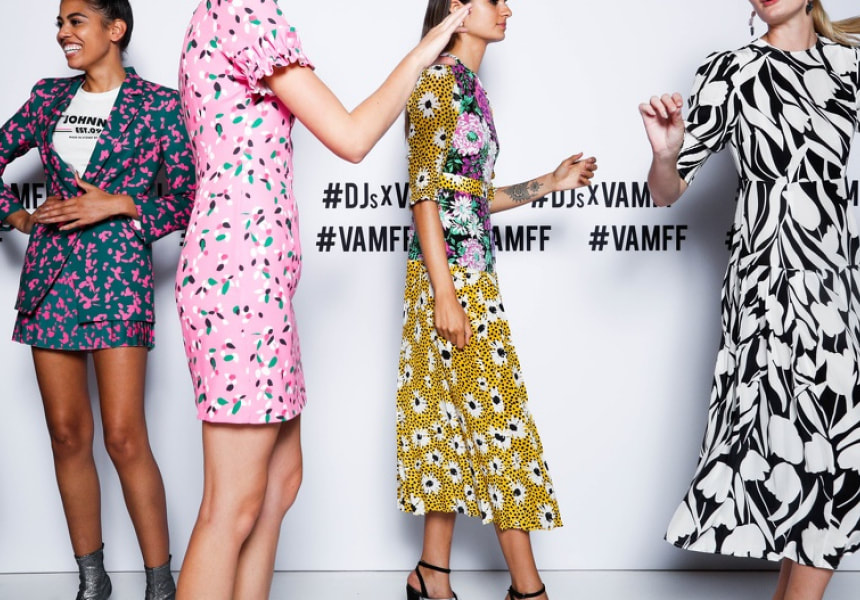
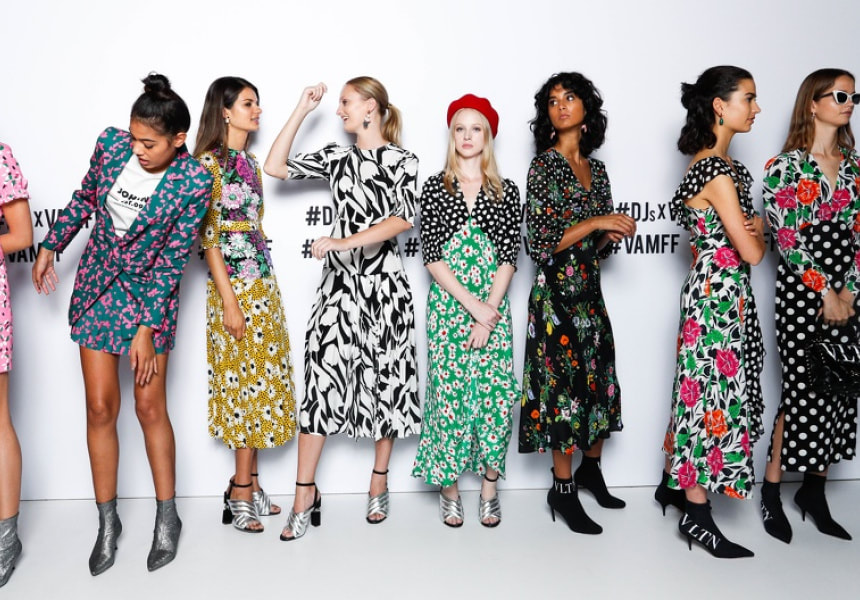


“The ones that do a really good job and that are able to connect with their markets do so because they really believe wholeheartedly in their message and they believe that the industry does need to change,” Kate says.
In summary, a sustainable fashion designer is a fashion designer that turns the traditional fashion designer’s approach upside-down and creates multiple values to their function. Designing now means there are constraints — whether it be geolocation, cutting floor waste, fair labour, or materials — this way, sustainable fashion designers operate outside of just creating good, well-designed clothes and apparel that appeal to the masses. They contribute to problem-solving by product, and also, by influencing thought. How’s that for making an impact!
What sustainable fashion courses are out there and are they any good?
While sustainable fashion can sound like a buzzword, it sure is not, in practice. With the fashion industry currently undergoing a massive evolution, Fashion Education now plays a role to equip students with the knowledge and skills for the future – a crusade that is ever so important, as we face humanity’s greatest challenges in sustaining life on Earth with food, energy, and water.
Sabi agrees that education doesn’t have a place in the future if it doesn’t move with time. “What we need to educate them for is the problems of our industry that they need to be part of changing and fixing… so they don’t become obsolete,” Sabi says.
“What I think is key to innovating and developing for the future, especially in fashion, is to be exposed to different ideas, ways of thinking, and methods so that you start to figure out your own impact. Education allows that process to happen,” Kate concurs.
Many fashion courses have been reflecting the conscious work towards this goal. Whilst big institutions like Parsons School of Design and London College of Fashion are definitely desirable, I promise you won’t have to burn a hole in your (or your parents’!) pocket just to get quality education. Here are just some local fashion courses that can benefit any sustainable fashion designer wannabe:
Bachelor & Diploma of Design (Fashion and Sustainability), Collarts (Melbourne)
Just early this year, Collarts introduced this program, making its mark as Australia’s first tertiary fashion degree with sustainability integrated and considered throughout every phase of the curriculum.
Expert, academic and head of fashion at the college, Dr Rachel Matthews says the degree was built on “the idea of design as a problem solving activity” (which Sabi tells me is something we often forget; design is all about problem solving) by teaching students new methods on design and new ways to consider a product’s lifeline and improve the fashion supply chain.
“Currently, there’s no other course like it being offered in Australia. It’s an exciting and immersive course that’s perfect for people wanting to shape the future of the industry. Students will learn how to create desirable fashion with a focus on sustainable, responsible and ethical consumption,” Dr Matthews said.
Bachelor of Fashion and Textiles (Sustainable Innovation), RMIT University (Melbourne)
If you’re keen on getting an early start into the fashion industry, RMIT should definitely be on your radar. This undergraduate major for fashion students, which Kate is currently teaching, focuses on ethical and sustainable practices with digital technologies and partnered projects at the core of learning.
“RMIT strongly advocates for those types of projects and to have industry involved in the students’ experience,” Kate says, “It helps them to understand that these issues we are learning, in a theoretical and practical sense, are backed up by potentially really important figures in the industry who are also saying the same thing.”
Not just to help you contextualise your learning, Kate believes it’s also an important step for you to learn how to collaborate with people outside of the university as well as your peers, colleagues and studio leaders.
Bachelor of Fashion, Box Hill Institute (Melbourne)
Although not technically a sustainable fashion course, we’ve seen great things come out of this program including fashion graduate Tess themself. The program is an overview of the skills and knowledge in fashion including marketing and business, but also presents a third year project, titled Fashion Futures, that invites students’ own ideas around innovative and sustainable efforts.
“That class was about sustainability and technology in fashion, and was the first time I tried zero waste pattern cutting,” Tess explains, “That was my introduction to more about those issues and what got me into everything I do now.”
“It was a very industry-focused kind of course, they were preparing us to actually have jobs when we graduate.”
You’ll also be able to indulge in their Creative Design Hub located at their Nelson Campus. Equipped with sewing rooms, patternmaking tables and a photography studio, the space is perfect for creative flow and collaboration between students of photography, graphic design and of course, fashion design.
Bachelor of Design in Fashion and Textiles/Bachelor of Creative Intelligence and Innovation, University of Technology Sydney (Sydney)
This combined degree intertwines practice-oriented learning and critical thinking around real world problems and possibilities. So, if you’re looking for a course that covers all the bases of fashion and innovation, this is the one.
While the fashion degree equips you with necessary skills and its own practice around sustainability, the Bachelor of Creative Intelligence and Innovation (BCII) can take you that one step further by teaching you how to identify, understand and develop solutions to the most complex issues that face your discipline and industry. By utilising knowledge across multiple disciplines, and can often include students of other majors, what you get in the end is the chance to maximise your potential.
If you’re feeling unsure on how this mix can benefit you, see what past students have to say for themselves in the video below.
BA (Hons) International Fashion Business & BA (Hons) Fashion, Raffles Design Institute (Kuala Lumpur)
In partnership with Coventry University in the UK, these degrees have integrated global sustainability practices, and to give you that unprecedented advantage of designing and marketing, encourages students of both programs to work closely with each other.
Sabi’s own classes teaching the International Fashion Business program have tried to focus on collaboration across different industries, not just fashion. “I think that is the key to solving this puzzle. It’s collaboration outside of this one industry… and finding solutions that can be applied across various industries.”
Recalling her classes, Sabi tries to cultivate this mindset by inviting students to visit technology and engineering companies currently making waves towards sustainability.
“I want to show them how this kind of technology is already part of the industry that they’re working in. And in many ways, that is what’s helping solve those efficiency and wastage issues,” Sabi says. “As fashion designers, we have to be just as excited by a new cool technology as we are by a new hot fashion trend.”
Bachelor in Fashion Design Technology (Hons), Taylor’s University (Kuala Lumpur)
Prioritising the advent of new technology within fashion design is not the only perk of this degree, you’ll also get to work on projects alongside Kuala Lumpur Fashion Week (KLFW.) Hardly surprising considering the co-programme director, Andrew Tan, is also the founder of KLFW.
The involvement of KLFW means that their students are pushed to be “more forward-thinking with an industry driven mindset”, something highly valued in any sustainable fashion designer looking to make a positive impact.
Set up with its own on-campus design studio furnished with industry-grade machines and the latest tech, you will also be happy to hear that this program is home to Malaysia’s first co-working fashion studio, Mayamode, which means you get to interact and engage with many other designers along the way.
“Be open to any opportunities beyond what you thought was where you were going to end up, because every experience counts and makes you wiser. Network and connect, even in the less obvious places.” – Sabi Sohrabi, Raffles Design Institute
It’s clear that education strongly plays into your self-evolution as a sustainable fashion designer and the knowledge that puts you ahead. But, education comes in a variety of contexts and university is all but one.
Tess suggests also looking into online classes and workshops, which they have themselves utilised in setting up their sustainable fashion brand, Pendulum Studios.
“I enrolled in a fashion business course by Fashion Equipped,” Tess says, “Even though a lot of it I was already familiar with [from university], that course went into a little more depth and sort of broke everything down… It was a really useful resource for me.”
Sabi agrees that with living in an age of technology, you can pretty much Youtube or Google most things. “There are even universities offering cheap online courses that you can learn from around the world through Coursera or Udemy. You can hop online and do a three-week course,” she says.
With the abundance of programs available, Kate always advises people to do the research and have a look at what’s on offer to you. Look for a course that’s fun and interesting; one that caters best to your own passion and vision as a sustainable fashion designer.
How do I be successful and what does success look like?
We all want to be successful, and we all want to make a positive impact, leaving a legacy that’s more altruistic than driven by extrinsic reward. Success may seem too broad to define, but it’s actually just as simple as reflecting on yourself. It can be as simple as “feeling content and satisfied with your work”, Tess says.
Literally meaning ‘the achievement of a particular aim or goal’, success is relative and it all comes back to your own intentions.
“For me, as a teacher, to define success for my students would be irresponsible and unethical,” Sabi says. “Something I’ve learned… is that you can only make people aware of their own abilities and strengths; letting them define what success means to them and giving them tools to achieve it.”
And being someone who values the process more than the end result, it’s important to remind yourself that the journey to success is just as valuable.
Kate says, “A lot of the times we don’t really get to that end place that we envision for ourselves in the beginning. Our paths can split off into a variety of different mini journeys, and I think that’s just as important,” Kate says.
It’s not uncommon to get sucked into the whole ‘constant climb to success’ rhetoric, but success isn’t often a straight line.

I asked Sabi, Tess and Kate what advice they would give to help aspiring sustainable fashion designers achieve their own versions of success. This is what they had to say:
Sabi
“Be open to any opportunities beyond what you thought was where you were going to end up, because every experience counts and makes you wiser. Network and connect, even in the less obvious places. That said, don’t compromise your dreams and goals on the first whim of offer. Stay true to what you feel is yours.
“Be hungry for knowledge even after you graduate. Unfortunately, the education that we offer today is still lacking in some aspects. It’s an industry where you’re expected to be a maverick of all things as well, and a lot of crossovers happen a lot of the time. Upskilling is important.”
Tess
“Have a sense of perseverance and keep a level-head. You have to be able to wear a lot of hats, juggle tasks and prioritise without getting overwhelmed by the scale of what you’re doing. It’s useful to keep an eye on the big picture while working on specific tasks.
“It’s really important to have fun with what you’re doing. It’s a hard thing to do and if you’re not excited, it’s so much harder. Get really nerdy about all the research and the tech and all the cool stuff you can do with sustainability. Dig into the good stuff.”
Kate
“I think it’s really important to be reflective and understand the process or journey in itself is incredibly rewarding. Remain inquisitive, always be curious, ask questions and be willing to learn.
“Not all of our students are school leavers – they come from a diverse range of experiences and backgrounds – we’ve got a lot of mature aged students too. Always believe that you can learn more, because it helps to encourage you to always question, not only practices within industry, but also what you could do better or more of. It leads to interesting conversations, amazing innovations and great reflections on things that maybe didn’t work out.
“Make sure that you’re listening to the people around you and the situations that you’re in so you remain present and aware of what’s going on.”
If Sabi, Tess, and Kate can attest to one thing: it’s the comfort of knowing that intrinsic altruism can go hand-in-hand with financial reward, too, and there’s no shortage of demand for cultivating game-changers in this space.
Sustainable fashion has definitely pushed itself into the crowd of common conversations, and together, we can push its way even further into the spotlight. Designers hold the unique power to create impact and communicate across both consumers and producers. So, go out there and save the world.
Special thanks to Sabi Sohrabi, Tess Whitfort and Kate Sala for their involvement in this article.
Shareena is a journalism graduate with a passion for stories about the arts, culture, social issues, and any combination of the three. She is personally interested in collaborating with other like-minded people, and loves interviewing people on all the above. She is currently a producer and content manager at the podcast, Conversations in Colour.
Join us in our Slow Fashion movement with the hashtags #ConscientiousFashionista and #wardrobetruths on Instagram, and follow us at @fashinfidelity.
Tags: #sustainability #circularfashion #circularity #ethicalfashion #sustainablefashion #fashiondesign #fashiondesigner #sustainablefashiondesigner #ecofashion #greenfashion #responsiblefashion #recycling #MelbourneFashion #Melbourne #MalaysianFashion #Malaysia #KLFW #conscientiousfashionista #fastfashion #slowfashion #wardrobetruths #fashioneducation #fashion #fashinfidelity

